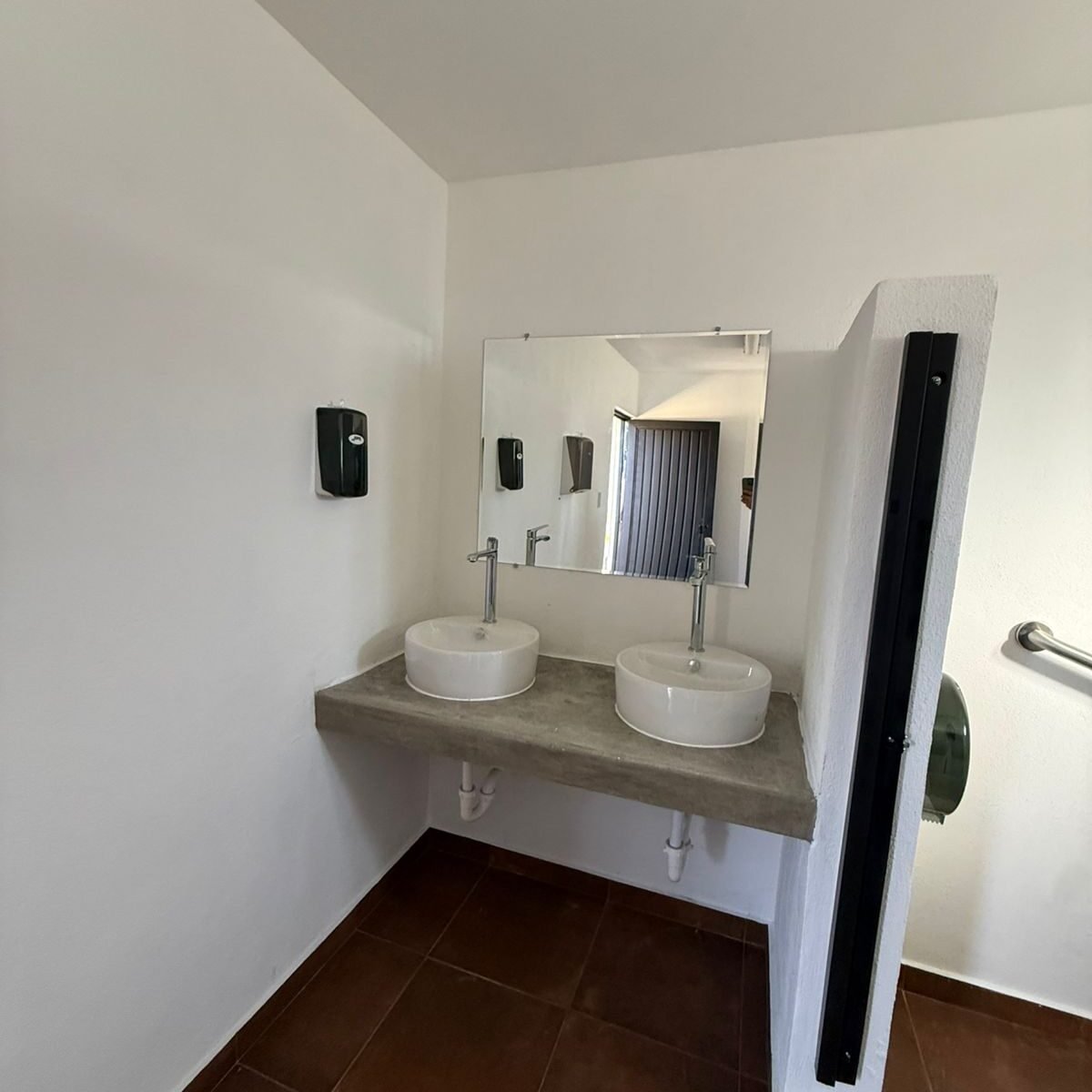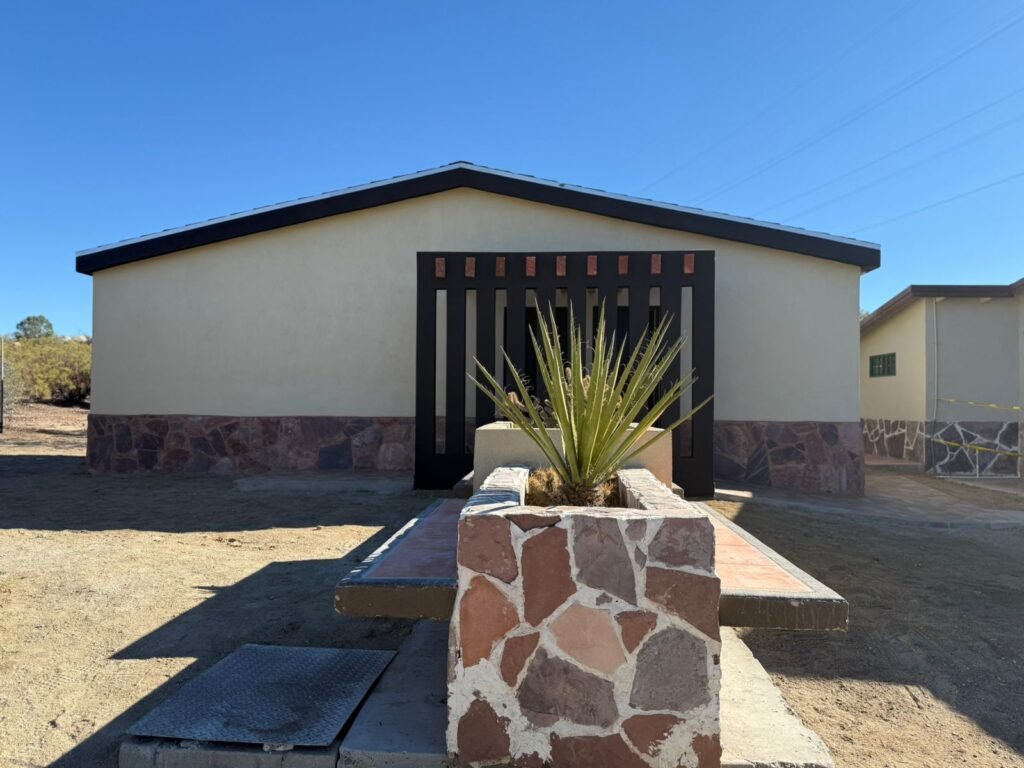A Treasure With an Age-Old Problem
El Vallecito is one of those rare Baja treasures everyone promises to visit “soon,” yet life, traffic, and a badly timed Santa Ana wind often derail the plan. Still, when people finally make the slow climb to La Rumorosa, the reward is worth the effort. The site offers ancient rock art, a two-kilometer trail, and a landscape that looks exactly like the word “prehistoric” sounds.
Even so, the place has always shared a modern problem: no proper bathrooms. Few things ruin the magic of 1,500-year-old paintings faster than searching for the nearest bush with growing panic.
A Little Sarcasm Before the Good News
So Sempra Infraestructura stepped in — and honestly, bless them. Because if the company ever gets bored with energy projects, maybe they could also swing by the casetas and fix those bathrooms too. You know, the ones guarded by Caminos y Puentes Federales (CAPUFE) — the same heroes who charge us to pass and still run out of toilet paper and hand soap before lunchtime. But anyway… back to archaeology.
Sempra Steps In (With Plumbing)
Using resources from its Social Investment Plan tied to the Cimarrón project, Sempra Infraestructura built new restroom modules at El Vallecito. This investment forms part of the third phase of the Parque Energía Sierra Juárez, which includes several improvement efforts in La Rumorosa.
According to Jaime Vélez Storey, director of the INAH Center in Baja California, El Vallecito is the only archaeological site open to the public in the entire state. Yes, the only one. Therefore, hundreds of visitors — locals, tourists, researchers, families, and enthusiastic school groups — pass through each week.
And hundreds of visitors without decent bathrooms? You can imagine the challenges.
Vélez Storey thanked Sempra for the donation and explained that the new modules finally meet the needs of children, teachers, hikers, and that one uncle who always drinks too much coffee before a road trip.
The new facilities include separate sections for men and women. They were designed with children in mind. The official handover should happen soon, once crews finish final adjustments.
Why Bathrooms, and Why Now?
El Vallecito has appeared on INAH’s improvement list for years. The site deserves attention. It holds paintings estimated at around 500 years old, created by Indigenous groups who gathered there between August and October during their seasonal movements.

These communities hunted small animals, collected piñón, and interacted with neighboring groups. Their presence remains in red, black, and white pigments painted across rock shelters and large boulders. Archaeologists believe human activity in the area began at least 1,500 years ago.
Even so, El Vallecito has never had strong infrastructure to support rising tourism. More visitors always mean more pressure on fragile sites — and on the small team protecting them.
Sempra’s investment fits its broader effort to improve community spaces near its development projects. Bathrooms may not sound glamorous, but they matter. Without basic services, school groups visit less often. Fewer visitors means fewer advocates for preservation.
What’s Next for El Vallecito
The restrooms are only the first step. INAH plans to build a small museographic room and an archaeology storage facility as part of a long-term improvement plan. For a site that has always been appreciated but rarely funded, this represents real progress.
Visitors can currently explore five rock shelters connected by a scenic two-hour walk. The trail is open Wednesday through Sunday, from 8:30 a.m. until the last visitor enters at 3:00 p.m.
So if you haven’t gone yet, add it to your list. The rock art is striking, the views are pure Baja, and now — thanks to Sempra — the bathrooms won’t send you running back to the car.
No Bad News — even at 1,500-year-old pit stops.



1 Comment